LEDs are fast replacing CFL lights as society demands more energy-efficient options. But, until now, many users didn’t know that older lighting technologies contained traces of toxic materials. In truth, most of these lighting technologies were unsafe and could cause fatal damage when broken. But do LEDs have the same defect? And what happens when your LEDs break? Keep reading this article to learn about LED light mercury and how to handle the problem.
Do LED Lights have Mercury in Them?
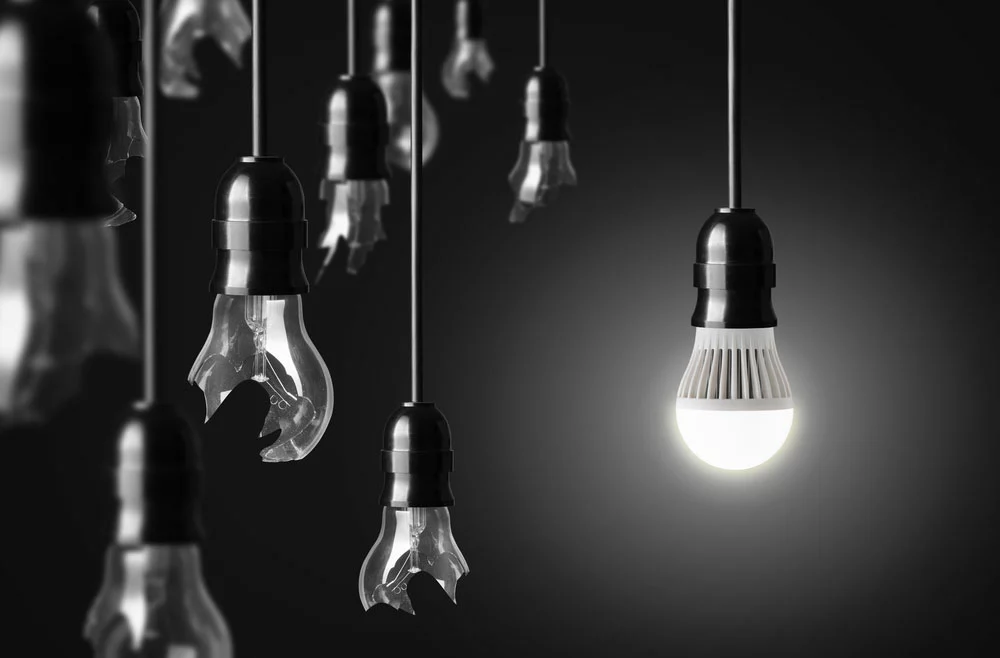
LED, among other broken bulbs
First off, LEDs don’t contain traces of mercury. Contrary to other lighting technologies, LEDs use semiconductors to generate light. Hence, they don’t need mercury for the process.
What are the Dangers of Broken LED Bulbs?
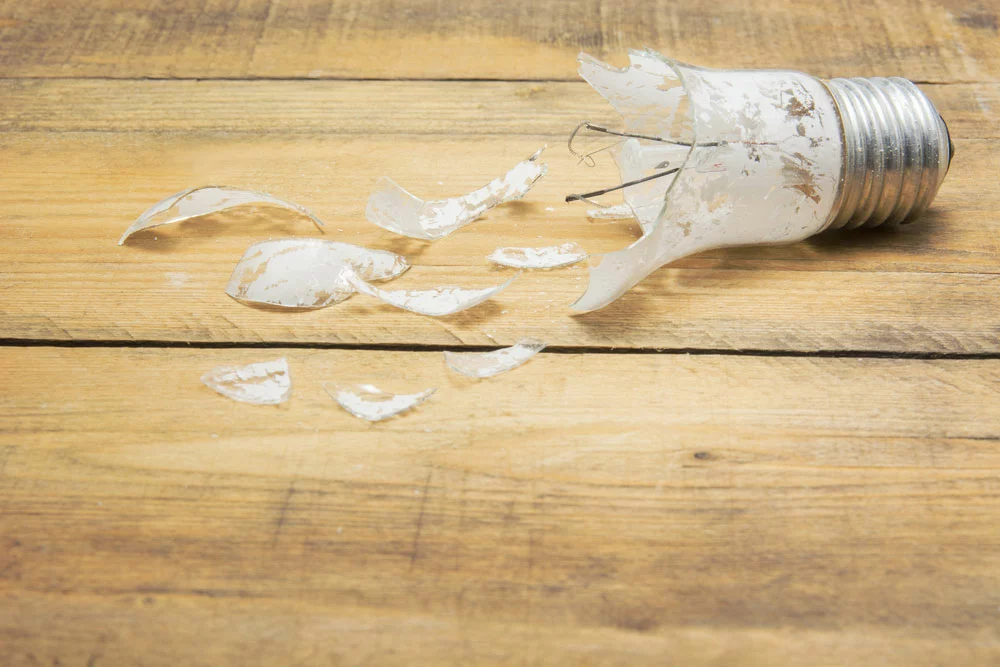
LED Lights Mercury: Shattered bulb
Undoubtedly, LEDs have a lifespan of up to 50,000+ hours and incredible durability. But sometimes, you could damage your LEDs during a collision.
And it’s hard to spot shattered LED bulbs because they are translucent. So, it poses an injury risk. The good news is: this risk is small compared to the hazard from CFL or Fluorescent lights.
Although LEDs possess some toxic metals (which we’ll discuss later in detail), they lack toxic gasses that linger in the air.
What other Hazardous Materials do LED Lights Contain?
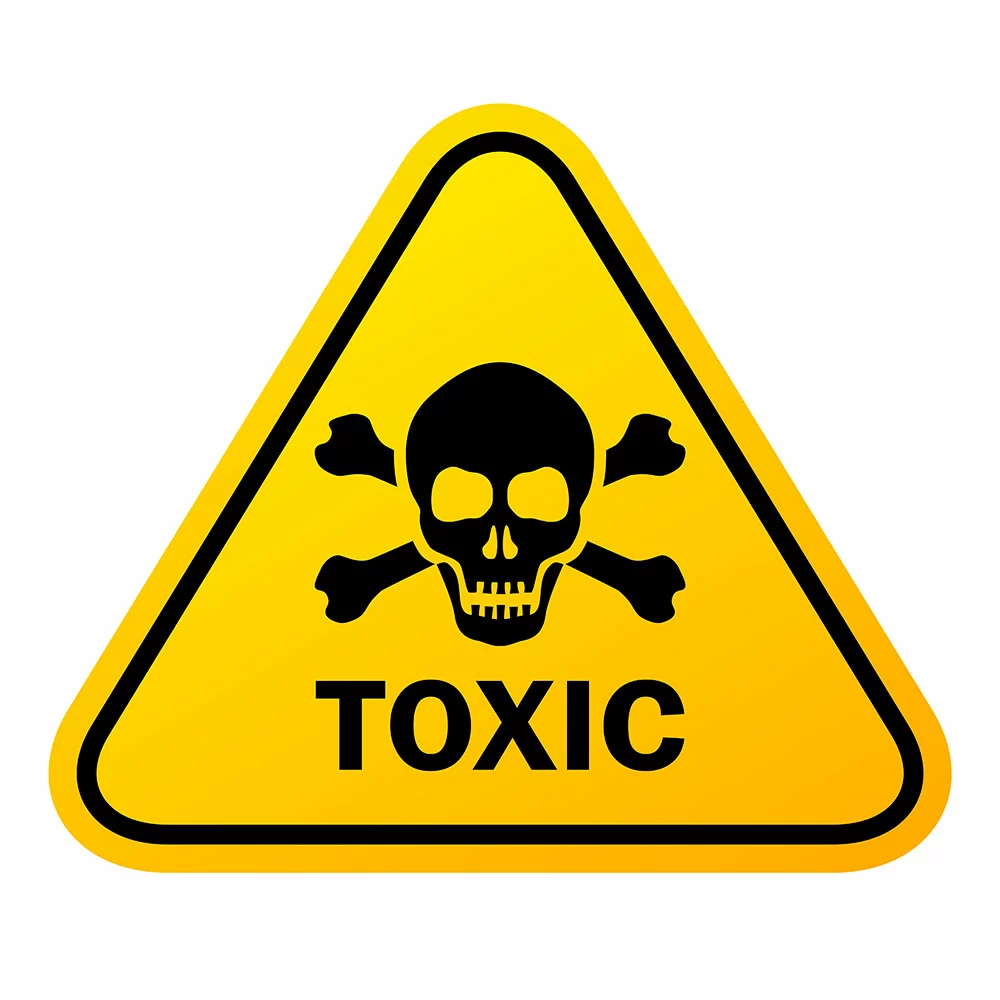
LED Lights Mercury:Toxic warning sign
As we mentioned earlier, LEDs aren’t toxin-free. In truth, an LED bulb’s internal components contain materials like iron, nickel, arsenic, lead, and copper.
Unfortunately, exposure to these materials can cause long-term complications. For instance, high exposure to arsenic can heighten the risk of skin lesions, diabetes, and cancer. However, the concentration of these toxic metals depends on the LED type.
Besides, red LEDs are like toxicity demons because they contain more than double the amount of lead in other LEDs.
What’s more? These materials are also harmful to the planet. For example, copper doesn’t decompose. Hence, it poisons marine wildlife and microorganisms.
You’re probably wondering: Since LEDs have these toxic materials, why are they safe? It’s because LEDs contain trace amounts of these metals.
Although we don’t recommend breaking an LED and inhaling its fumes, exposure to such tiny amounts may not have dire consequences.
What Should You Do With Broken LEDs?
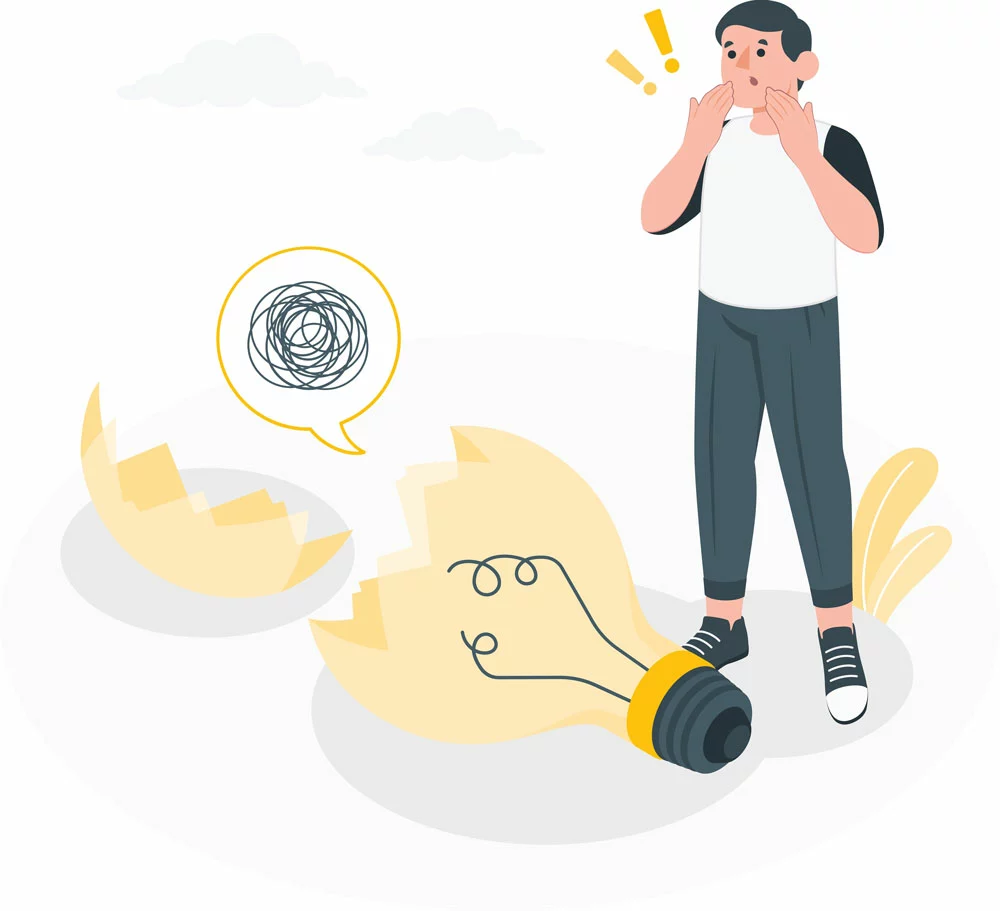
LED Lights Mercury: A man confused about a broken bulb
LEDs don’t require special disposal. And since they are not toxic according to the law, you can dispose of the bulbs in a regular trash can. But we recommend recycling the bulbs.
Also, if your LEDs break, here are steps to dispose of them properly:
- First, ensure all children and pets (if any) are far away from the vicinity, as they are more vulnerable and prone to injuries from shattered bulbs.
- Then, wear some gloves and a mask for extra protection from broken bulbs or toxic fumes.
- Allow the fumes in the air to dissipate by deactivating airconditioners and opening windows.
- Next, use stiff cardboard and a broom to pack the bulb shards and dispose of them afterward.
- Get some sticky tape. It’ll help you pick up minuscule fragments, as the broom can’t sweep up everything.
- Finally, pour all the waste into a sealable container.
After following these steps, you’re free to dispose of the pieces like regular trash.
Recycling LED Bulbs
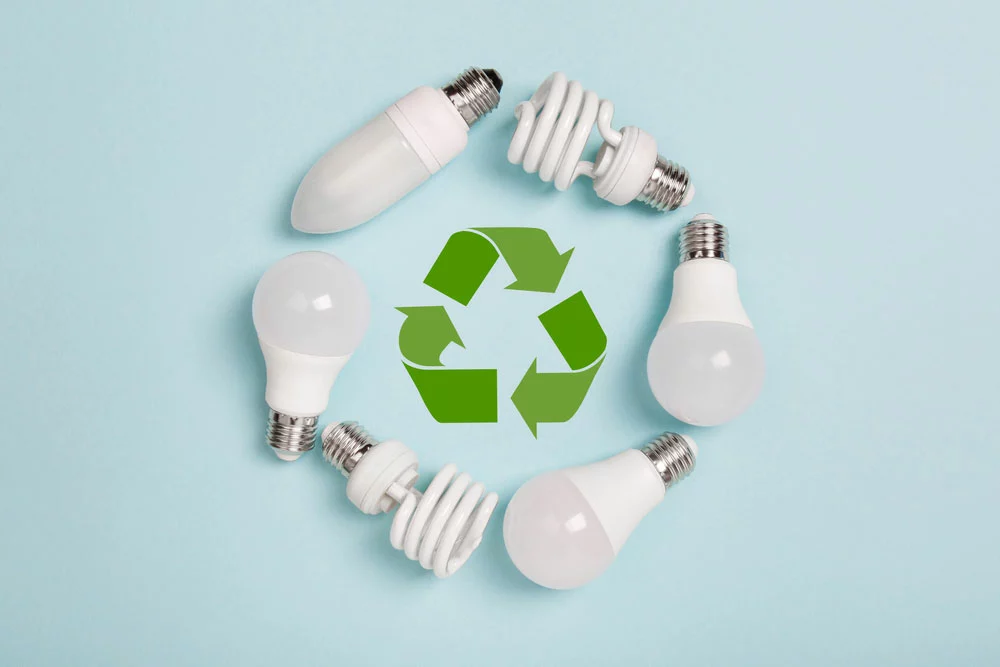
LED Lights Mercury: Recycling LED bulbs
Since LEDs contain useful and rare earth materials, it’s best to recycle the bulbs.
Interestingly, regulations are underway to enhance the end-of-life cycle of LED bulbs and make them with less dangerous substances.
Also, you can check with your bulb’s manufacturer to see if they offer take-back policies and recycling programs. Or, you can head to the nearest local stores to confirm if they recycle LED lights.
Unfortunately, LEDs only have tiny amounts of electronic parts, making them less attractive to many local recycling facilities. The only exception is if the bulbs come in bulk for recycling.
Are Unused LED Bulbs Dangerous?

LED bulbs
Unused LED light bulbs are 100% safe to keep around unless they break.
However, we recommend keeping LEDs in safe spaces like drawers. So, the bulbs should be far away from heat or water.
In Closing
LED lights mercury don’t exist, and the bulbs aren’t dangerous when it comes to toxicity. In short, LEDs are safe according to the laws regardless of the metals they contain.
Also, “toxic” metals in an LED are so negligible that they’d barely have any effect. H wever, children and pets are more susceptible to exposure. S we recommend taking some safety precautions if your bulb shatters.
What do you think about the dangers of LEDs? Contact us if you have more questions. We’re always available to help.
